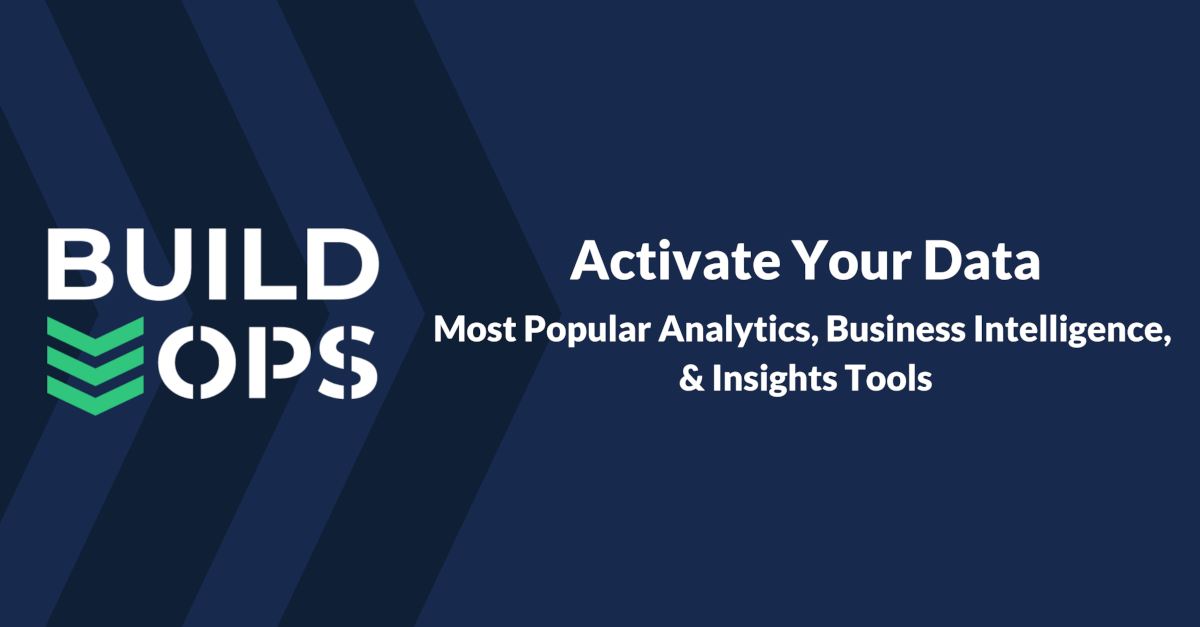BuildOps is excited to share this business intelligence usage report. Our goal is to help construction industry professionals understand the best technology tools and platforms. Our team identified hundreds of platforms and tools and we invite you to explore, compare, and learn how they can benefit your business.
Some of the largest infrastructure projects produce an average of 130 million emails, 55 million documents, and 12 million workflows. With vast amounts of data being captured from many sources, many firms can’t manage and process this much information.
What We Discovered
Historically companies have invested 3-4% of revenue into IT, software infrastructure, and innovation. Construction companies, however, have been spending less than 1% on innovation and tech, but this trend is starting to change.
Construction companies are catching up and understand that data is the new success currency and it is not enough to just capture it – the ability to make data-driven decisions is becoming an even bigger factor for revenue growth. It is no surprise there are over 400 platforms and technologies to choose from – business intelligence is a major tool that helps companies gain a competitive advantage.
Interest in business intelligence technology is skyrocketing among construction industry companies in the past 4 years, according to Google Trends data. The top 5 most used solutions: Mode, Tableau, Microsoft SQL Server Reporting, SAP Crystal Reports, and Microsoft Power.
There are over 420 Business Intelligence platforms on the market today and over 260,000 companies around the world that are leveraging them, including many construction companies.
What’s a Business Intelligence (BI) platform?
A BI platform helps businesses gather, understand, and visualize their data. It serves as the backbone of a company’s business intelligence strategy, which is
how a company uses the information to make strategic decisions. The purpose of BI platforms is to help companies compete in today’s data-saturated world by turning data into a competitive advantage.
Construction Competitive Advantage Application – In the construction industry, companies use BI tools for pre-construction analysis, visualization of complex data, preparing accurate estimates and bids, real-time resource management and forecasting (estimating manpower, materials, etc.), asset tracking and optimization, fuel cost reduction and other cost controls, and more.
Top Findings
- Mode, Tableau, Microsoft SQL Server Reporting, SAP Crystal Reports, and Microsoft Power BI are the top 5 most used solutions.
- There is a significant interest in “Business Intelligence” as a topic within the Construction industry. In the past 4 years Google tracks popularity going from 22 to 92 popularity index (1 to 100 scale).
- Top tools, like Mode and Tableau, are deeply focused on various data visualization techniques. The popularity of these tools in construction is also associated with the ability to visualize complex data and make it simple for everyone to comprehend.
- 71% of executives rated prioritizing digital skills and making data-driven decisions as a winning move for businesses in the future construction industry ecosystem (Source – McKinsey).
Global Data
How popular are of BI tools in the construction industry? Take a look at this Google Trends chart – it highlights the popularity of the BI topic among construction companies with interest skyrocketing in the past 4 years. Google tracks popularity going from 22 to 92 popularity index (1 to 100 scale).
Below are the global Business Intelligence platform usages across 6 million-plus websites. Compare and see whether construction companies differ when it comes to web analytics tools. Here are the top 25 technologies across the top few million websites on the Internet.
Comments and Other Findings
- GlobalData predicts that “construction companies will spend $1bn. on AI platforms by 2024. This is up from $436MM in 2019, representing a compound annual growth rate (CAGR) of 19.2% between 2019 and 2024.”
- Digital twins are digital versions of objects and systems and are used to make investment decisions based on actionable data such as assessing the performance of buildings in real-time. Digital twins are one of the factors driving BI and AI technology adoption in construction.



